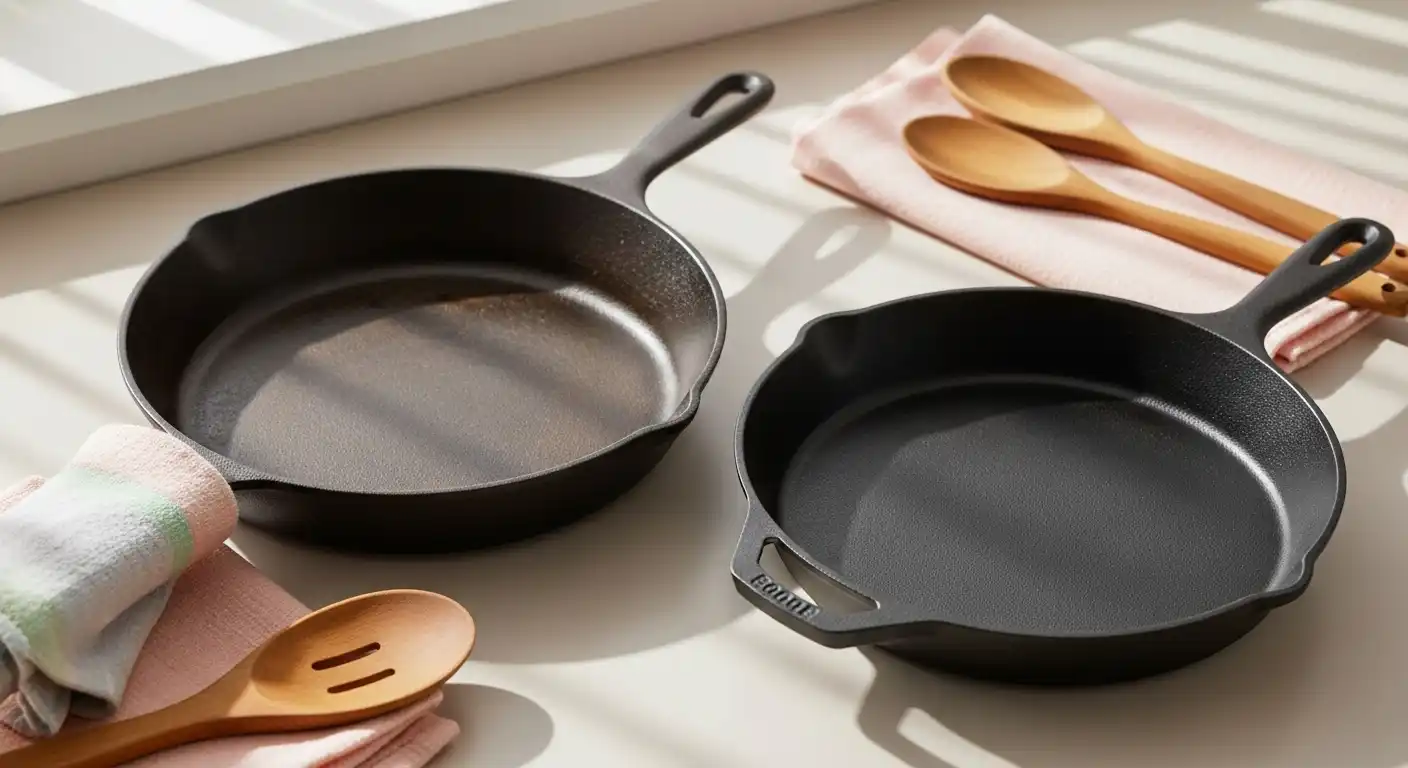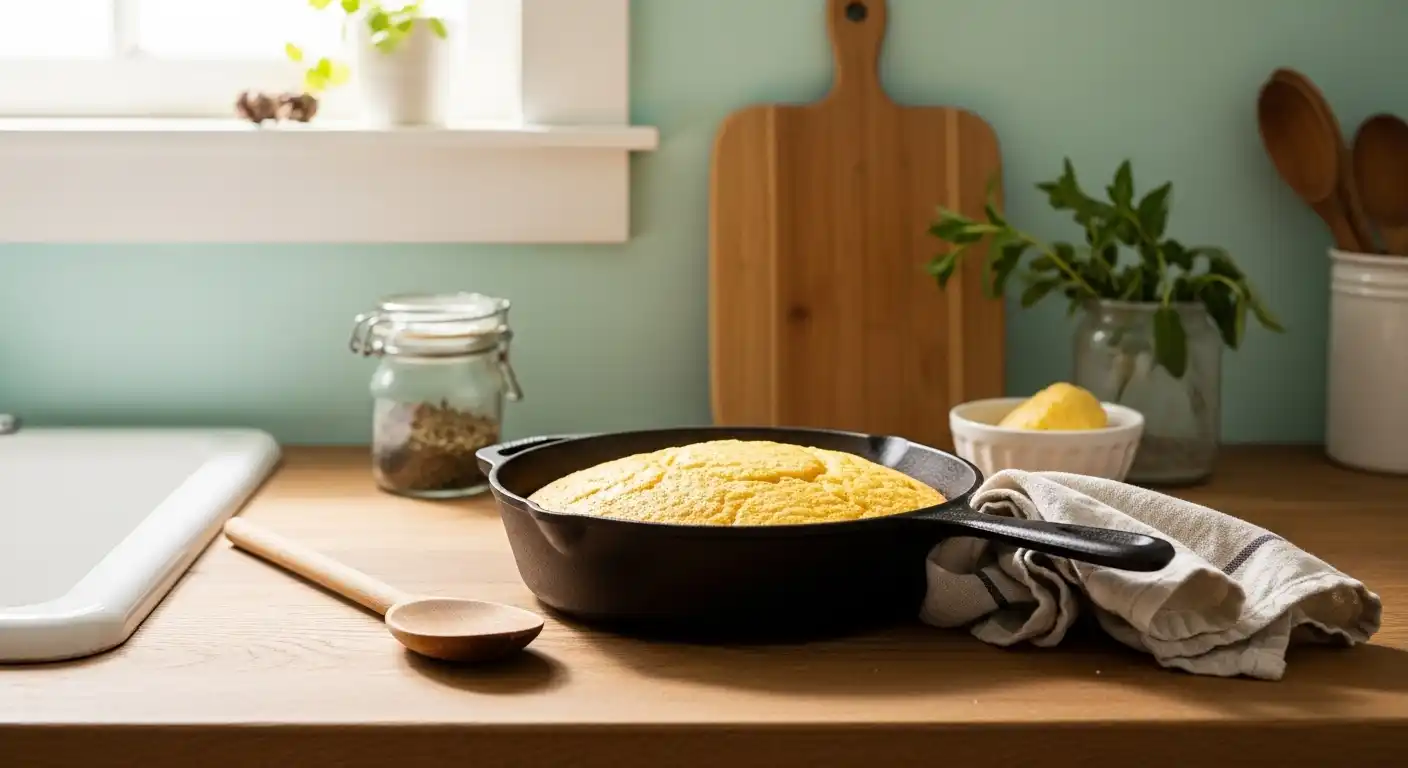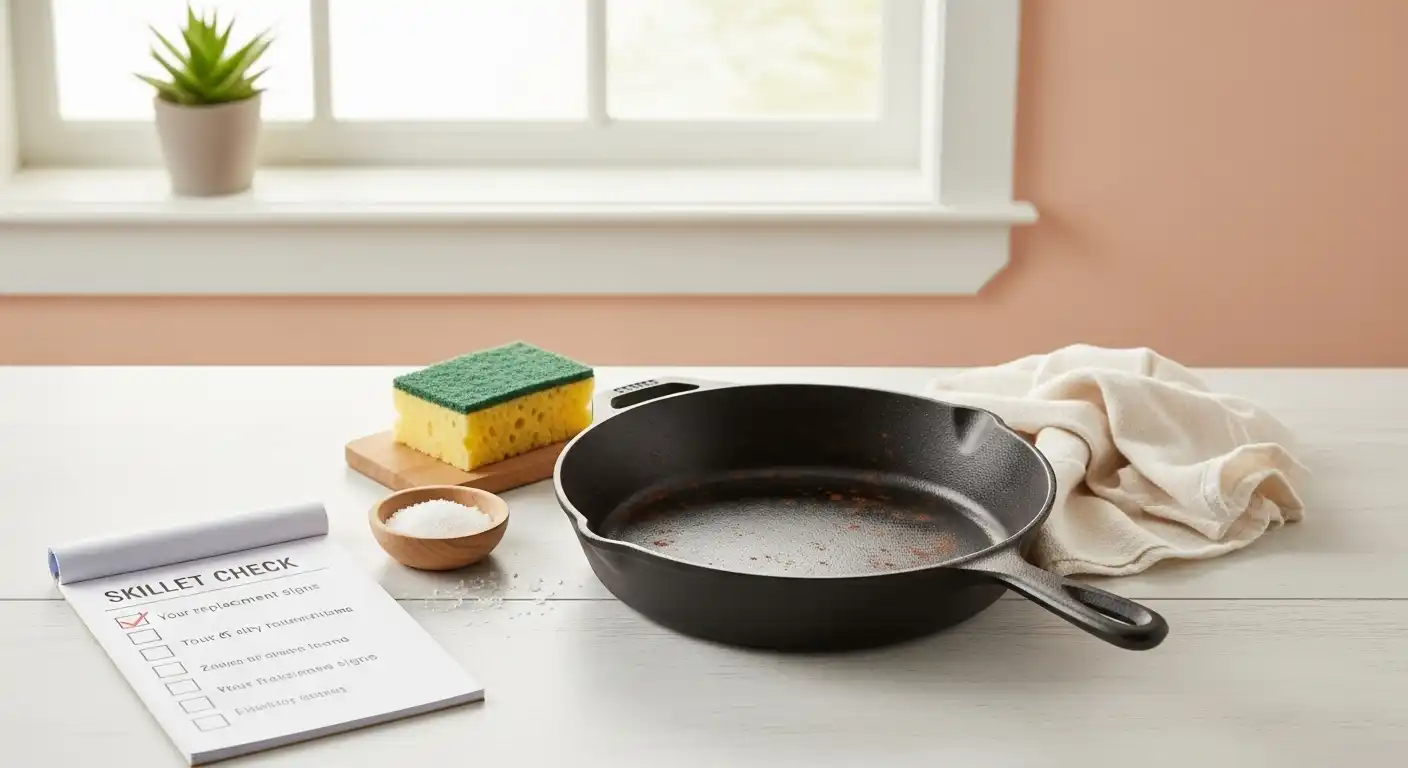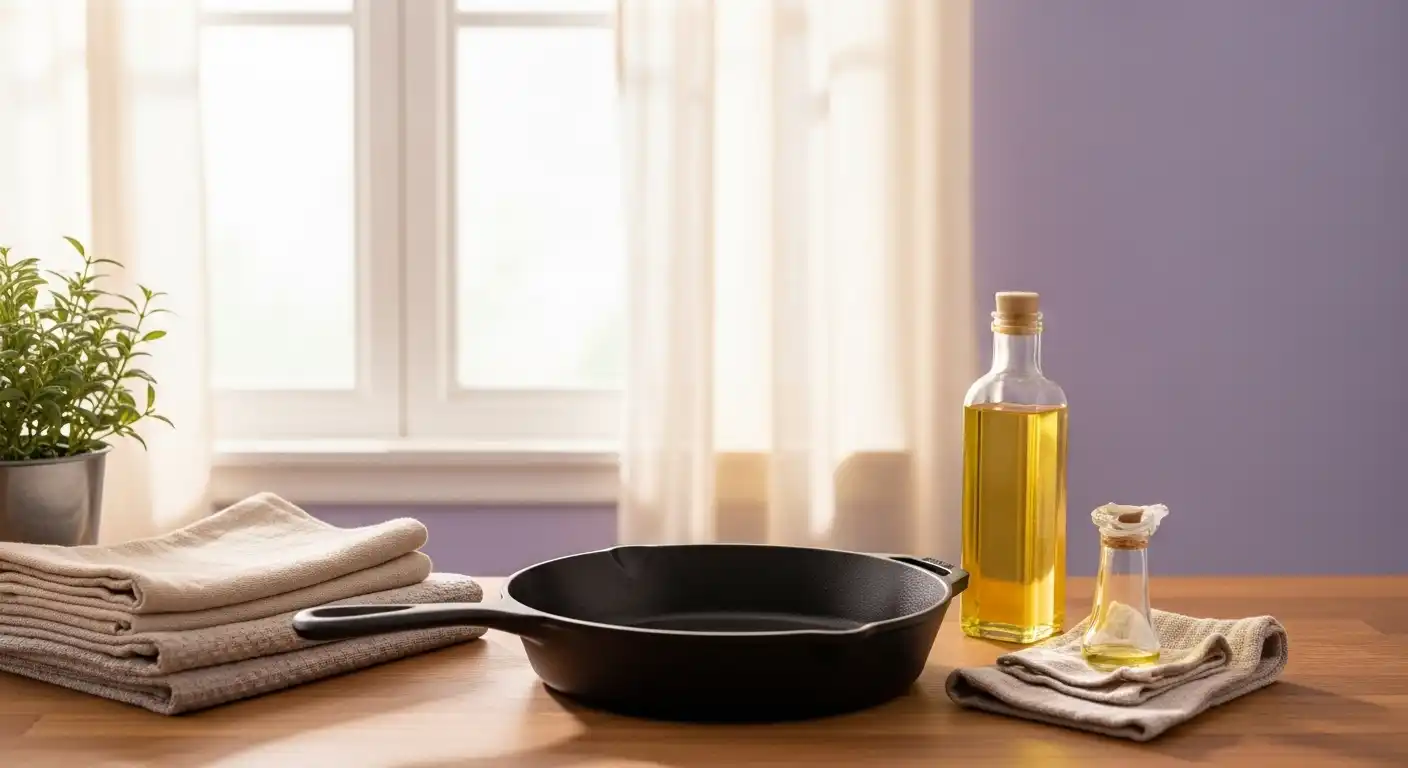How Often To Replace A Cast Iron Skillet: A Comprehensive Guide

Cast iron skillets are beloved for their durability, versatility, and ability to elevate any dish with that perfect sear or golden crust.
Whether you’re a seasoned home cook or just starting your culinary journey, you’ve likely heard the praise for cast iron cookware.
But a question that often arises is: How often to replace a cast iron skillet?
Unlike many other kitchen tools, cast iron is built to last, but there are scenarios where replacement might be necessary.
🎄 Christmas & Year-End Amazon Deals !
Don’t miss out on the best discounts and top-rated products available right now!
*As an Amazon Associate, I earn from qualifying purchases.
In this guide, we’ll explore the lifespan of a cast iron skillet, signs it’s time to replace one, and tips to keep yours in top shape for generations.
Let’s dive into why these kitchen workhorses are so enduring and how to know when it’s time to let go.
Why Cast Iron Skillets Are So Durable
Cast iron skillets are practically indestructible when cared for properly.
Made from a single piece of molten iron, they lack the weak points found in other cookware, like welded handles or non-stick coatings that wear out over time.

Their robust construction allows them to withstand high heat, making them ideal for everything from stovetop searing to oven baking.
A well-maintained cast iron skillet can last decades, even centuries, passed down through generations.
This durability is why many treasure vintage skillets, which often outperform modern cookware.
To understand the age of your skillet, check out how to tell how old a cast iron skillet is.
However, even the toughest skillet isn’t immune to damage. Let’s explore when and why replacement might be necessary.
Signs Your Cast Iron Skillet Needs Replacing

While cast iron is built to last, certain conditions can signal it’s time to retire your skillet. Here are the key signs to watch for:
Cracks or Warping
Physical damage, like cracks or warping, is one of the few reasons to replace a cast iron skillet.
A crack compromises the skillet’s structure, leading to uneven heating or potential breaking during use.
Warping, often caused by rapid temperature changes (like plunging a hot skillet into cold water), can prevent the skillet from sitting flat on your stovetop.
If you’re using your skillet on an induction cooktop, warping can also reduce efficiency.
🎄 Christmas & Year-End Amazon Deals !
Don’t miss out on the best discounts and top-rated products available right now!
*As an Amazon Associate, I earn from qualifying purchases.
Learn more about compatibility in Can You Use a Cast Iron Skillet on an Induction Cooktop?.
Persistent Rust That Won’t Go Away
Rust is a common issue with cast iron, especially if the seasoning layer is damaged or the skillet isn’t properly dried after cleaning.
Light rust can often be scrubbed away and the skillet re-seasoned, but deep, pitting rust that eats into the metal is a sign of trouble.
If rust persists despite your best efforts, it may be time to replace the skillet.
To prevent rust, proper cleaning is key—check out how to clean a cast iron wok for tips that also apply to skillets.
Damaged Seasoning That Can’t Be Restored
The seasoning on a cast iron skillet—a layer of polymerized oil—creates its non-stick surface.
Over time, improper cleaning (like using harsh detergents) or cooking acidic foods can strip this layer.
While re-seasoning is usually possible, a skillet with severe pitting or a surface that no longer holds seasoning may not perform well.
For guidance on maintaining that perfect seasoning, see how to use a pre-seasoned cast iron skillet for the first time.
Unpleasant Odors or Flavors
If your skillet starts imparting off-flavors or smells to your food, it could indicate trapped residues or rancid oil in the seasoning.
Thorough cleaning and re-seasoning can sometimes fix this, but if the problem persists, replacement might be the best option.
Avoid storing food in your skillet for long periods, as this can contribute to odors.
🎄 Christmas & Year-End Amazon Deals !
Don’t miss out on the best discounts and top-rated products available right now!
*As an Amazon Associate, I earn from qualifying purchases.
Learn more in Can You Put Cast Iron in the Fridge?.
How Often Should You Replace a Cast Iron Skillet?
So, how often to replace a cast iron skillet? In most cases, a well-cared-for skillet can last a lifetime or longer.
Many users never need to replace theirs, as proper maintenance prevents the issues mentioned above.
However, if your skillet shows severe damage—like cracks, deep rust, or unfixable seasoning issues—it may be time to invest in a new one.
The frequency of replacement depends on usage and care.
Heavy daily use with poor maintenance might necessitate replacement every few years, while a cherished skillet cared for properly can last generations.
Curious about the cost of a new skillet? Check out how much does a good cast iron skillet cost?.
Tips to Extend the Life of Your Cast Iron Skillet

To avoid frequent replacements, proper care is essential. Here are some practical tips to keep your skillet in top condition:
Clean It Properly
Always clean your cast iron skillet gently. Avoid dishwashers and harsh soaps, which can strip seasoning.
Use warm water, a soft sponge, and a bit of salt for stubborn bits. Dry thoroughly to prevent rust.
For detailed cleaning tips, see how to clean a cast iron wok, which applies similar principles.
Season Regularly
Regular seasoning maintains the non-stick surface and protects against rust.
🎄 Christmas & Year-End Amazon Deals !
Don’t miss out on the best discounts and top-rated products available right now!
*As an Amazon Associate, I earn from qualifying purchases.
Apply a thin layer of oil after cleaning and heat the skillet to lock in the seasoning.
For more on this, check out seasoning a cast iron Dutch oven.
Avoid Extreme Temperature Shocks
Rapid temperature changes can cause warping or cracking.
Let your skillet cool slightly before washing, and avoid placing a hot skillet on a cold surface.
If you’re cooking on a glass-top stove, take extra care to avoid scratches or damage.
Learn more in Can You Use Cast Iron on a Glass Top Stove?.
Use It Correctly
Cast iron is versatile, but it’s not suited for every cooking method.
Avoid using it in the microwave or for long-term food storage, as these can damage the seasoning.
For more on safe uses, see Can You Use a Cast Iron Skillet in a Microwave?.
When to Keep Using Your Skillet
Not every imperfection means it’s time to replace your skillet.
Minor rust, small scratches, or a slightly uneven seasoning layer can often be fixed with a little TLC.
Re-seasoning, gentle scrubbing, or even professional restoration can bring an old skillet back to life.
🎄 Christmas & Year-End Amazon Deals !
Don’t miss out on the best discounts and top-rated products available right now!
*As an Amazon Associate, I earn from qualifying purchases.
If you’re unsure whether your skillet is salvageable, compare its condition to the signs above.
A skillet with no structural damage and a fixable surface is likely worth saving.
Alternatives to Replacing Your Cast Iron Skillet
If your skillet is beyond repair, you might consider alternatives.
For example, a cast iron wok offers similar durability with a different shape for stir-frying.
Or, explore other cookware types in what can you use instead of a cast iron skillet?.
If you’re hesitant to replace your skillet due to cost, rest assured that quality cast iron is often affordable.
A good skillet doesn’t have to break the bank, as discussed in how much does a good cast iron skillet cost?.
Common Mistakes That Shorten a Skillet’s Lifespan
Avoid these pitfalls to keep your skillet in prime condition:
- Cooking Acidic Foods Frequently: Tomatoes, vinegar, or citrus can erode seasoning over time. Use stainless steel for these dishes instead, as discussed in cast iron Dutch oven vs. stainless steel pot.
- Using Cooking Sprays: Sprays like Pam can leave sticky residues. Learn why in Can You Spray a Cast Iron Skillet with Pam?.
- Improper Storage: Storing food in cast iron can lead to rust or odors. See how to store food in cast iron cookware for best practices.
Final Thoughts on Replacing Your Cast Iron Skillet
A cast iron skillet is a kitchen staple that, with proper care, can last a lifetime.
By cleaning it correctly, seasoning it regularly, and avoiding common mistakes, you can keep your skillet performing at its best for years.
However, if you notice cracks, persistent rust, or unfixable seasoning issues, it may be time to replace it.
When choosing a new skillet, consider your cooking needs—whether it’s for induction cooking, oven use, or even a Blackstone griddle.
With the right care, your next cast iron skillet could become a family heirloom, just like the one it replaced.
🎄 Christmas & Year-End Amazon Deals !
Don’t miss out on the best discounts and top-rated products available right now!
*As an Amazon Associate, I earn from qualifying purchases.
